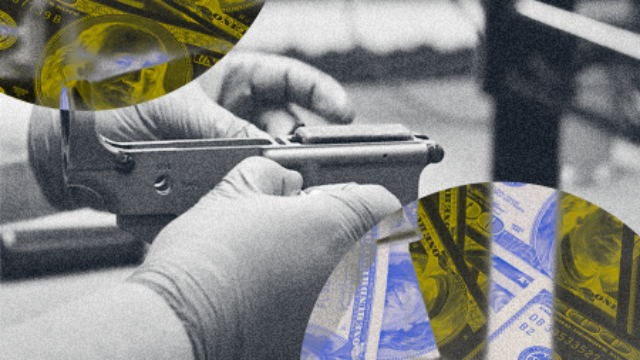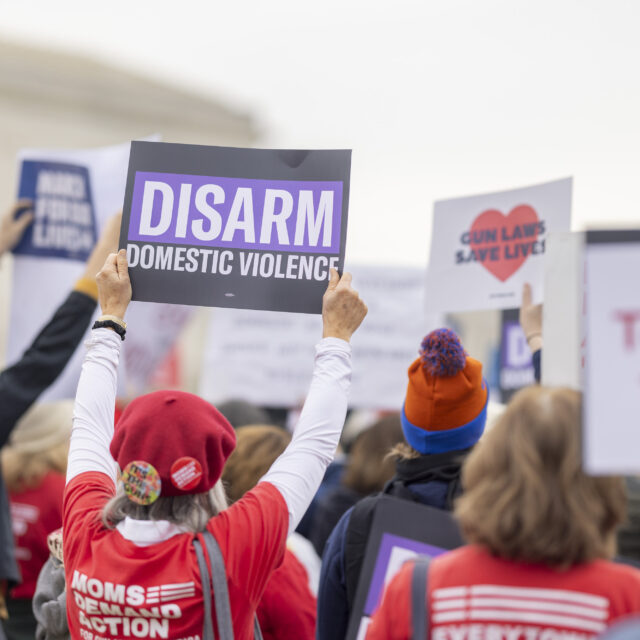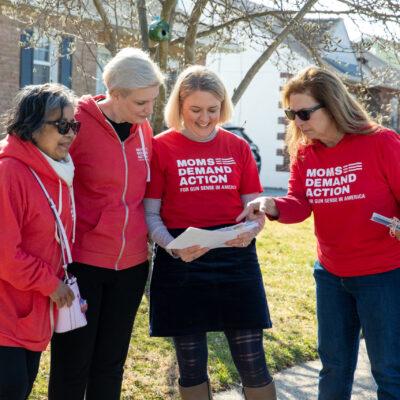Gun violence costs the United States $557.2 billion each year, of which $12.6 billion is paid by taxpayers.
Amid conversations about government efficiency, and promises of a “balanced budget,” one would think that protecting policies that prevent gun violence would be the place where the Trump-Vance administration would start cutting some costs.
One would be wrong.
Despite violent crime dropping to a near 50-year low in the wake of bipartisan progress on gun safety, the Trump-Vance administration is blowing up the very laws that keep law enforcement and our communities safe from gun violence. Policies that implement laws that have been on the books for decades—and enforced by Republican and Democratic presidents alike—are being rolled back.
Repealing a life-saving policy that shuttered dangerous gun dealers, chipping away at other common-sense safety regulations, and advancing a “pro-gun agenda” comes at a cost to public safety. As the following examples show, the gun industry can almost always find a way to profit while people across the United States die—and taxpayers, communities, and our country pay the price.
In 2014, Beretta announced plans to relocate its U.S. operations from Maryland to Tennessee. Tennessee and the town of Gallatin offered Beretta $4 million in incentives, including 100 (free) acres of land worth $1.75 million and a 10-year tax abatement worth about $2.2 million.
According to reporting, Beretta saw Tennessee as “a state not only that was pro-gun, but that was likely to be pro-gun for many decades or generations to come.” That was a strong consideration for the company, whose relocation was largely motivated after Maryland passed legislation designed to curb mass shootings. Following that legislation, Beretta said, “The idea of now investing additional funds in Maryland and thus rewarding a government that has insulted our customers and our products is offensive to us so we will take steps to evaluate such investments in other States.”
Later that year, a student at Marysville Pilchuck High School in Washington used a Beretta Px4 Storm pistol to carry out a mass shooting. That student killed four classmates, wounded another, and then died from a self-inflicted bullet.
Daniel Defense—South Carolina and Georgia
In 2011, Daniel Defense expanded its manufacturing to Jasper County, South Carolina. The state, in return, gave Daniel Defense reimbursements for training its workers, a grant, and tax credits. The company, which was founded in 2000, had also previously received two federal loans that totaled over $2.7 million.
Years later, Daniel Defense shut down its South Carolina facility and consolidated its manufacturing at its headquarters in Black Creek, Georgia. The county “agreed to construct and install a permanent loop road” for Daniel Defense—a project with projected costs totaling over $400,000. The county also gave Daniel Defense “relocation incentives” and tax breaks.
The construction of the Black Creek facility was completed in “autumn of 2017.” That same fall, multiple Daniel Defense AR-style firearms were recovered after the deadly October 1 Route 91 Harvest Festival mass shooting in Las Vegas, Nevada. Sixty people were killed and 411 were wounded, making it the deadliest mass shooting in modern U.S. history.
During the COVID-19 pandemic in 2020—a record year for gun sales for many firearm manufacturers—Daniel Defense again received financial support, this time to the tune of $3 million from the first tranche of federal Paycheck Protection Program funding. Two years later, a Daniel Defense AR-15 was used in the Robb Elementary School mass shooting in Uvalde, Texas.
On September 16, 2013, a gunman used a Remington Model 870 Express Tactical pump-action shotgun during a mass shooting at Washington Navy Yard in Washington, D.C., in which 12 people were killed and three people were wounded.
Less than six months later, Remington announced its plans to open a new production facility in Huntsville, Alabama. Then-CEO George Kollitudes attributed the expansion, in part, to what he said was a “demand for our products at a historic high.” At the time, Remington said it would invest $110.9 million and create 2,000 jobs. In return, the city and state offered the company $38 million in cash as well as tax breaks and assistance in workforce recruitment and training valued at $66 million.
However, Remington filed for bankruptcy in 2020 and sold off its assets, which left state and local officials trying to recoup its losses. Huntsville only recovered $12.5 million.
In July 2013, Sturm, Ruger, & Co. announced that it planned to open a gun manufacturing plant in Mayodan, North Carolina. The Associated Press reported that while Ruger publicly said that it wanted to open a factory in North Carolina, the company “kept alive enough doubt that state officials raised their offer of tax breaks and other sweeteners three times.” The report suggests Ruger used the area’s 9-percent unemployment rate as leverage. In the end, per AP, North Carolina and the local governments gave Ruger a tax and incentives package valued at $15.5 million contingent on Ruger “meet[ing] investment and hiring goals.”
Years later, during a company earnings call in February 2020, Ruger’s then-CEO said, “In Mayodan, North Carolina, we reached the employment threshold needed to lock in our state incentives for years to come while delivering awesome new products such as the AR-556 Pistol.”
In 2021, just over a year later, the Ruger AR-556 was used in at least two deadly mass shootings. In March, a gunman used a Ruger AR-556 Pistol to kill 10 people at a King Soopers supermarket in Boulder, Colorado. Less than one month after that, eight people were killed and four people were wounded during a shooting that also involved a Ruger AR-556 rifle at a FedEx Ground facility in Indianapolis, Indiana.









